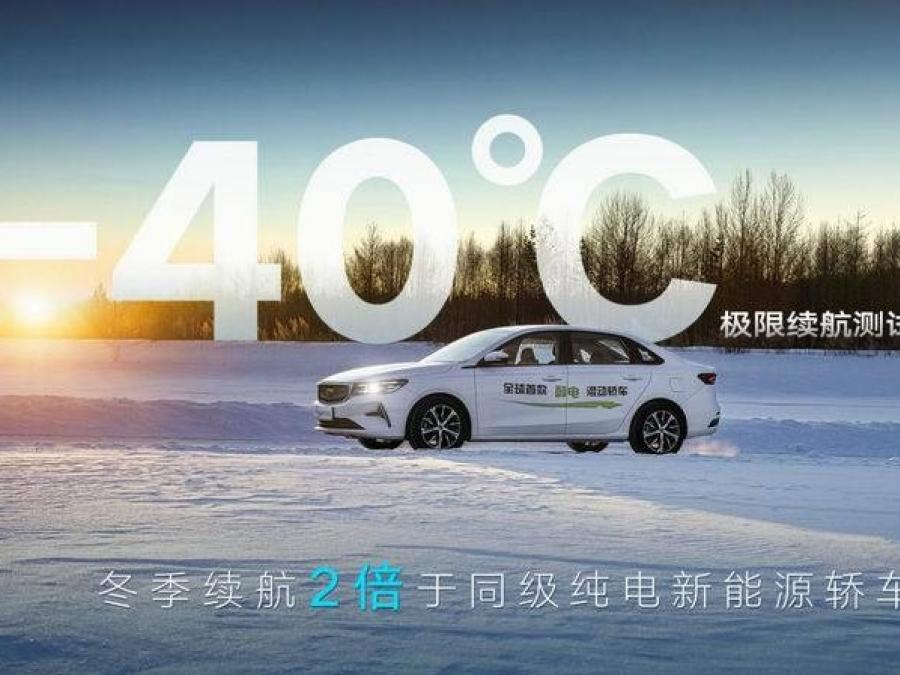
The dire situation played out last week when a Tesla Model 3 owner was driving down the highway when the car's computer allegedly crashed. This caused the electric vehicle to become unresponsive and stuck at a mind-boggling 83 mph.
Tesla driver says computer stuck at 83 mph/133 km/h
Rodriguez said the main screen froze and all buttons and switches stopped working while he was driving down the highway. After a few moments, the gas pedal did not respond to high speed.
“I noticed that the car got hot and there was a strange smell. I was nervous that if I slowed down hard, I wouldn't be able to pick up speed again to keep up with traffic and avoid cars. I was nervous that someone might bump into me."
He realized that the brakes were working and made a safe and controlled stop on the highway.
He worries that some security feature in the car might cause the on-board computer to shut down without warning.

In the frigid northern Chinese province of Heilongjiang, Geely brought the world’s first methanol hybrid sedan to test its performance in sub -40°c arctic conditions.
Geely’s latest Methanol Hybrid Emgrand is based on Geely Auto’s 4th generation B-Segment Modular Architecture (BMA) and is the latest product from Geely’s decade-long 3 billion RMB investment into methanol vehicle development. Previous generation methanol vehicles faced difficulties with cold starts but with Geely’s NordThor Power hybrid technology and the latest generation methanol powertrains, issues with extreme cold environment performance have been eliminated.
Geely started to explore methanol car technologies back in 2005. In last 17 years, Geely has applied for over 256 patents in the methanol sphere. Furthermore, Geely was the first car company in China to use methanol technologies in production cars. Since 2013, it has also taken part in several domestic and foreign methanol vehicle pilot projects. Since 2005, Geely has sold about 27,000 methanol cars, most of which were commercial vehicles.
According to Geely, the new Methanol Hybrid Emgrand has low operating costs and ultra-low emissions. The sedan houses a 1.8L naturally aspirated methanol engine providing 130hp of power and 175 Nm of peak torque together with an electric motor providing 100kW (134hp) of power and 320 Nm for a combined 272kW (364hp) and 495 Nm of torque. The engine and e-motor are connected to a 3-speed Dedicated Hybrid Transmission (DHT) which provides increased efficiency at low speeds by propelling the vehicle with pure electric power, ensures smooth cruising by utilizing the engine as a range-extender with e-motor powering the wheels, and provides bursts of power for high-speed overtakes with a transmission gear ratio that provides up to 4920Nm of output torque.
With methanol fuel price at Chinese pumps around 3RMB/liter (or $1.8 USD/Gallon), fuel costs per 100 km is roughly 27 RMB (or $4.28 USD). In the face of rising global gas prices, methanol fuel offers a viable, cleaner and affordable alternative. Eric Li, Chairman of Geely Holding Group said:
“Clean methanol from green and renewable sources is the most realistic and effective path to reducing emissions and achieving carbon neutrality. The advantages of methanol fuel are not theoretical and have been proven for decades in applications around the world. Methanol fuel choices offer the world a road to a greener and more sustainable future.”
The company says that from well to wheel, Geely’s methanol vehicles allows for a 70% reduction in CO2 emissions compared to gasoline models. Previous demonstration trials of non-hybrid Geely Emgrand methanol sedans in Iceland achieved an average well to wheel emissions of 46g of CO2 per km, even lower than electric vehicles in most countries. In the future, Geely Holding methanol vehicles will undergo EU certification and be promoted to other European markets in support of accelerating the goal of reaching carbon neutrality.

A first-ever fire incident involving Kia’s award-winning all electric EV6 has surfaced the internet. According to reports, the fire erupted after the EV6 crashed into a concrete barrier somewhere in Budapest, Hungary.
Although it has been stated many times that EVs are actually less prone to catching fire than conventional combustion engine vehicles, however in the real world there are some instances when an EV has appeared to be more dangerous in a crash. Specifically in case of any impact that affects the battery pack or any of vehicle’s high voltage cabling.
There are no details yet regarding the reason of this fire incident or the variant of Kia EV6 that got involved in the crash, keeping in mind it comes with both 2-wheel and 4-wheel drive versions with one and two electric motors respectively. Though the driver was reportedly injured and was taken to hospital.
According to the analysis by InsideEVs, assuming if it’s an all-wheel drive model, then the impact in the front of the vehicle may have damaged the electrical conduits that the high voltage cables needed to power the front motor are run through. If it was a rear-wheel drive model, then the risk of a frontal impact causing a fire would have been reduced – with no second motor there, there are no high voltage electric parts in the front or any charging port to get damaged.
Looking at the video, one can see that the blaze does appear to be concentrated in the front of the Kia, but it’s not coming from underneath the vehicle, so maybe the battery had yet to catch fire or only the front modules had been affected when the video was shot. Official response from Kia regarding this incident is yet to become public.















